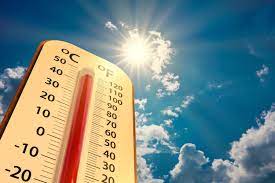The National Emphasis Program for Heat Stress has returned. Daily planning and supervision are necessary.
Heat-related illness can affect workers in many industries, at indoor or outdoor worksites. Some job-related risk factors include:
- Performing outdoor work in warm weather, or in uncontrolled temperature indoor work environments,
- Working in operations with processes that have ovens, foundries, or other elevated temperature scenarios,
- Strenuous physical activity, and
- Wearing heavy or non-breathable work clothes.
When these (or other) heat hazards are present, employers must plan to protect workers.
Heat Illness Prevention Plan – Creation and Maintenance
Employers must maintain a current written plan to prevent heat-related illness. Important elements to consider when creating the heat prevention plan include:
- Individual Assigned for Program Oversight
- New worker adjustment program for heat tolerance
- Temporary worker supervision program
- Extended Leave Worker adjustment program for heat tolerance
- Medical Assistance Notification and First Aid Administration Assurance Program effectiveness
- Heat stress reduction engineering controls and work practices
- Heat stress measurement and determination of hazard level
- Response methods for National Weather Service heat advisory or heat warning
- Workplace employee and Supervisor Training Details
Day-to-Day Supervision
Heat conditions can change rapidly and management commitment to adjusting heat stress controls is critical to prevent heat illness. An individual at the worksite should be responsible for monitoring conditions and implementing the employer’s heat plan throughout the workday. NIOSH and OSHA have developed a free download and use application for heat stress recognition for iPhone and Android users which provides guidelines for specific location heat stress management.
This individual can be a foreman, jobsite supervisor, plant manager, safety director, or anyone else with the proper training. Proper training includes knowing how to:
- Identify and control heat hazards,
- Recognize early symptoms of heat stress,
- Administer first aid for heat-related illnesses, and
- Activate emergency medical services quickly when needed.
Ideally, the individual who is responsible for the heat plan should be on-site, where the workers are. On-site monitoring allows accurate determination of heat stress. In industries with a widely distributed workforce, such as mail and package delivery, on-site monitoring might not be feasible. In those cases, the responsible individual at the site must be trained on the means and methods to contact and report to the employer any adverse heat related conditions that may develop on the site as well as any signs and symptoms of heat related illness experienced by any of the workers. The responsible individual in a central location should estimate heat stress using the best available methods for remote estimation.
If an employee complaint is filed then OSHA will contact the employer or if an injury resulting from heat stress exposure requires hospitalization, the employer must contact OSHA within 24 hours. See recordkeeping page https://www.osha.gov/recordkeeping/.
OSHA initiative applies to indoor and outdoor worksites in general industry, construction, agriculture and maritime where potential heat-related hazards exist. When OSHA comes to a site based on the National Emphasis, usually an Industrial Hygienist (IH) is present. An assigned OSHA Compliance Safety and Health Officer (CSHO) will participate in heat stress related facility inspections and will review the employer programs and records including:
- Heat stress intervention methods, including hydration programs, and frequent breaks in cooling stations at 70 °F.
- Worker awareness and recognition training effectiveness.
- What to do when a worker suspects a heat-related illness is occurring.
- Taking periodic measurements to determine workers’ heat exposure.
The CSHO also typically monitors the workplace to determine representative workplace temperature/humidity and conduct employee interviews. The air monitoring is completed using a sling psychrometer to make these determinations.
Spencer-SHE has been providing Safety, Health, and Environmental Compliance Guidance since 1980. Our team can measure/assess heat hazard(s) and develop solutions.
Contact us here to help you to develop and maintain a safe and healthy workforce.
Sources:
Heat – Planning and Supervision | Occupational Safety and Health Administration (osha.gov)
https://www.sciencedirect.com/topics/engineering/sling-psychrometer

